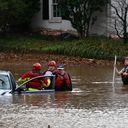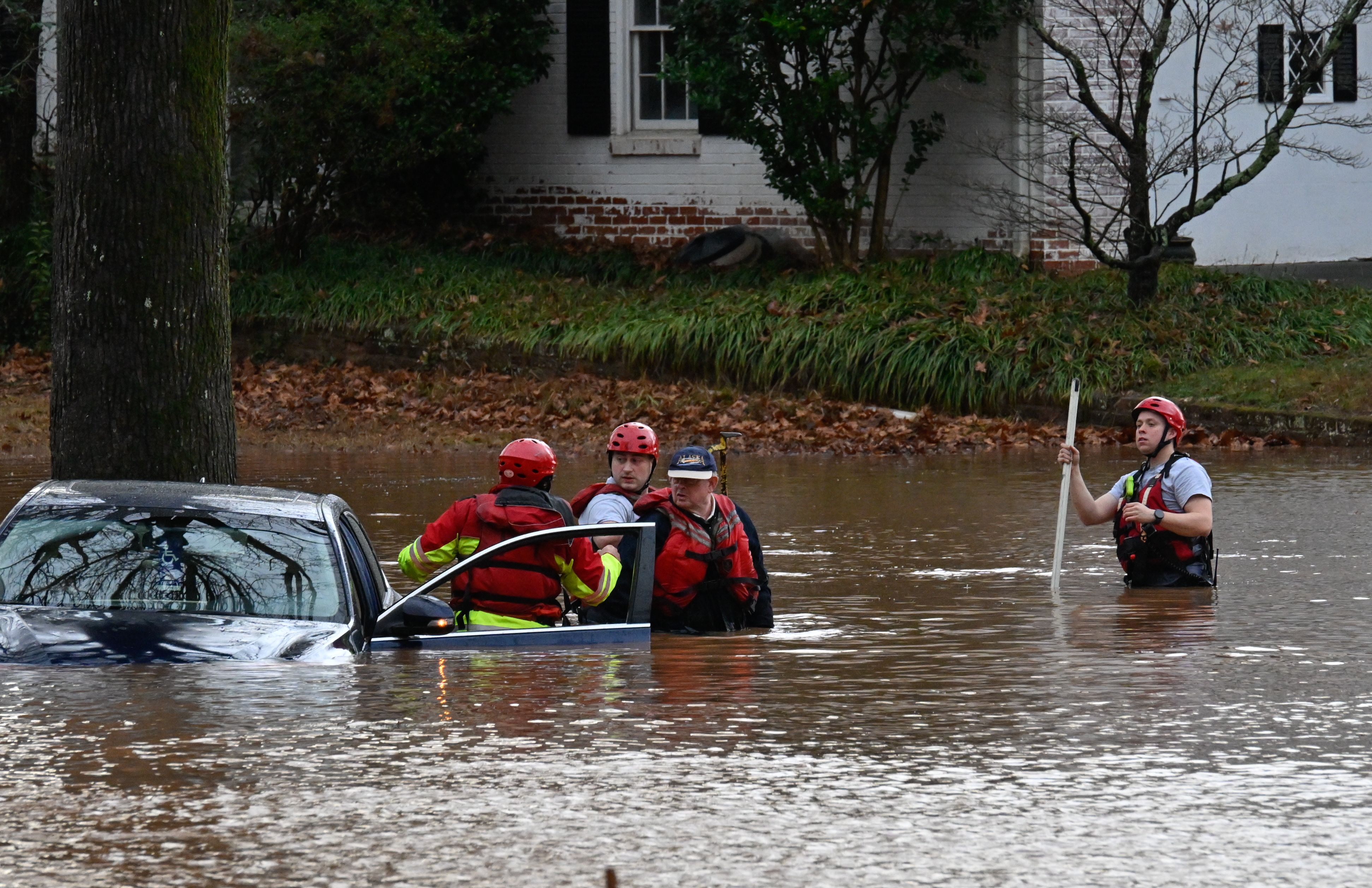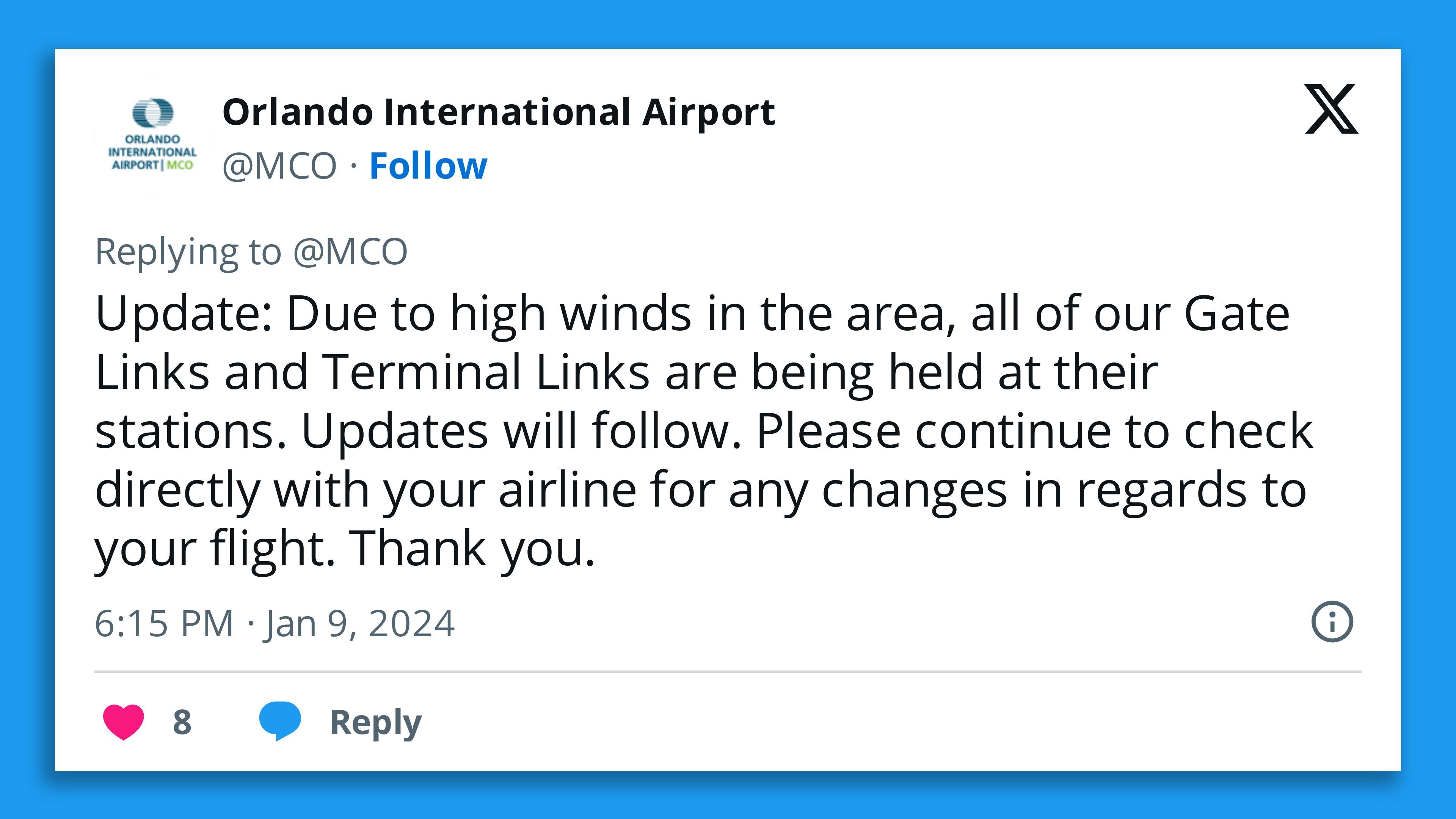What to know about deadly, sprawling winter storm slamming U.S.

One in a fusillade of winter storms is still producing heavy rain, snow and high winds in parts of New England after unleashing severe thunderstorms with embedded tornadoes across the Southeast U.S. Tuesday.
The big picture: At the storm's peak, 196 million people were under wind advisories, warnings and watches, including entire states from Florida to Maine, as a powerhouse cold front associated with it pushed east.
- The extreme weather has severely disrupted travel and killed at least four people.
- A woman died when a tornado struck her Alabama mobile home and another person in North Carolina was killed when severe weather hit a mobile home park amid unconfirmed reports of a tornado, according to local authorities. Two people died in Alabama and Georgia after trees fell on their cars, local officials said.
Of note: The storm is so intense that it set a record for the lowest atmospheric pressure recorded in Indianapolis in January. However, this record is likely to be broke in just three days, as the next storm rapidly intensifies. In general, the lower the pressure, the stronger the storm and its winds.
- Wind speeds just above the surface hit record intensities for the month of January, screaming from southeast to northwest at 100 mph at only 1,000 to 4,000 feet above the surface in the Mid-Atlantic and Northeast.
- This resulted in surface wind gusts above 50 mph across large areas, leading to widespread power outages. As of Wednesday morning, more than 500,000 customers were without power in the East.

- These winds, known as a low-level jet stream, accompanied a broad, narrow corridor of record-setting amounts of water vapor from the tropics to New England, where up to three inches or more fell. This is known as an atmospheric river.
By the numbers: The National Weather Service's Buffalo, New York, office reported late Tuesday wind gusts reaching 70 mph at a Mesonet weather station in Belleville, and the Watertown Airport — which gusted to 79 mph.
- In North Carolina, Wilmington International Airport recorded a wind gust of 73 mph Tuesday evening.
- About 1,000 flights were delayed and over 1,200 were canceled early Wednesday following thousands of delays and cancelations the previous day, per FlightAware.

State of play: The storm significantly impacted all three D.C.-area airports and those in Atlanta, Charlotte, Chicago's O'Hare and in New York, where the Federal Aviation Administration issued ground stops at JFK and LaGuardia airports late Tuesday.
- Vice President Kamala Harris' press secretary said on Tuesday night that the severe weather had forced her plane to divert:
Tonight, en route from Atlanta, GA, Air Force 2 was diverted from Joint Base Andrews to Washington Dulles International Airport due to inclement weather.
— Kirsten Allen (@KirstenAllen46) January 10, 2024
Air Force 2 landed safely at Dulles and all passengers are safe.
Meanwhile, schools in Charlotte closed, while Raleigh and D.C.-area schools shut down early Tuesday due to flash flood and high wind threats. Closures and delays extended into the Carolinas, and south to Florida, per Axios Local reporters.
- Several schools in New York and New Jersey said they would open late Wednesday morning due to flooding and power outage threats.
Threat level: The NWS Weather Prediction Center noted the storm that's "producing a multitude of significant impacts from the Midwest to the East Coast" would carry over into Wednesday.
- Significant coastal flooding has been occurring in New England on Wednesday. Portland, Maine has recorded a water level on its top 5 list of all time, and many other communities in several states are reporting coastal flooding as winds drive a storm surge onto the coast.
Between the lines: Climate change is making heavy precipitation events, including record-strong atmospheric rivers like the ongoing storm, more extreme and frequent, studies show.
- This is largely because warming air and ocean temperatures put more moisture into the atmosphere, allowing storms to tap into more energy and produce heavier precipitation rates.
- This same storm brought blizzard conditions to Kansas on Monday.
Please stay home! It’s getting to the point to where we will not be able to rescue you if you get stuck because we are having trouble getting around now!
— Trooper Tod (@TrooperTodKHP) January 8, 2024
This wind is supposed to continue all night long with dangerous wind chills and more blowing snow! #kswx@KansasEmergency pic.twitter.com/8VaHTlHiPG
- Blizzard conditions were set to continue through Wednesday morning in the Northwest, bringing snow totals to several feet in the higher elevations of the Cascades and Olympics, with wind gusts exceeding 60 mph.
What's next: Another powerful winter storm is forecast for late this week into the weekend, with a major Arctic outbreak to follow.
Go deeper... In photos: Massive winter storm blasts U.S.
Editor's note: This article has been updated with new details throughout and a new photo.